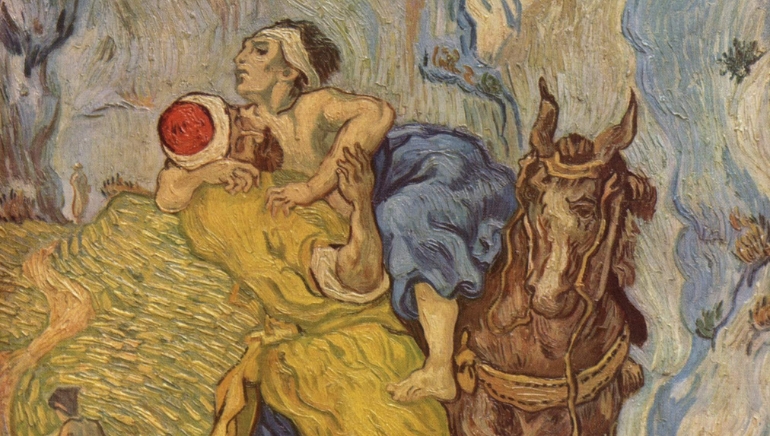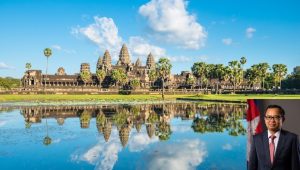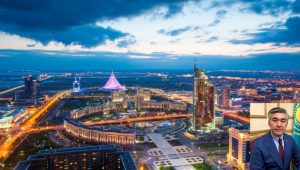FROM HERCULES TO THE NEW HEROES OF NON-VIOLENCE
BY PAOLA MARTANI
The above are the famous twelve labors of Hercules, the greatest of the Greek heroes. It was said that when these labors were completed, Hercules would not only be purified of his crimes, but would also attain immortality. When one reads the above list, some sense of the allegorical meaning, namely man’s need for growth and his ability to overcome the boundaries between human and divine, can be gleaned, but a true sense of these meanings is not really attained.
The same notion of heroism coloured the childhood of my generation and remains a common idea today. We see it time and time again in comics, action films, and with the heroes we see in video games and on television. These are fearless men who never ask permission. They embody strength, especially physical strength, and have a valid excuse for their aggression and violence.
However, such heroes that claim to be virtuous are actually morally questionable. As soon as we learn to speak and read, we accept the idea presented to us in stories that our world is populated by either heroes or villains. If we add human nature to this cauldron of external inputs, then the survival instinct, as a defense weapon used in response to possible danger, is trained to distrust those who are different. The result is fear, both personal and collective, of the ‘other,’ or the ‘villains,’ who are trying to destroy ‘the heroes.’ This fear is fertile ground for nurturing dangerous stereotypes that create sexism, gender disparities, and any other manifestation of discrimination that establishes the supremacy of one being over another.
When it comes to dividing the world into Us and Them, humans are more bizarre than monkeys who associate primates other than themselves with spiders. – Maria Montessori
Such inherent stereotypes and prejudices are so ingrained by these stories that we often don’t even realize they are there, let alone question them. These assumptions act as walls which separate people from each other, prevent mutual knowledge, and lead us to reject anything we see as belonging to the ‘side of the villains’ i.e. different to ‘us.’
This struggle with the different, which begins with children making a distinction between themselves and adults, becomes an obstacle to the free expression of the thoughts, emotions, and beliefs of the side which is weaker. This obstacle contributes to the creation of a society based on the limits imposed by a rigid definition of roles and is a fertile ground for the subsequent development of violent behavior.
‘The existence of a real and terrible conflict: a war without respite, which welcomes man at birth and accompanies him throughout his development: it is the conflict between adult and child, between strong and weak […]. Both unaware of their own characters, they fight each other in a dark struggle that has been repeated for millennia, but which today becomes acutely worse in our complicated and unnerving civilization.’ – Montessori-Ginevra, 1932
With all of that said, the nature of this binary distinction between ‘us’ and ‘them’, ‘right’ and ‘wrong’ or ‘good’ and ‘evil’ does change over time. What is considered truth in one era may be considered a belief or distant memory in the next. In other words, and although this may seem counterintuitive, many truths do not have universal value, but are limited to the historical moment, culture, and place. However, there is an exception to this rule, and that is related to the truths that originate from being human, truths that we might call instincts. One example is the need to help others when they are in distress. Another is to overcome the fear of not knowing, which leads to suffering, by learning and thus empowering ourselves to overcome that suffering.
I do wonder what the world would be like if we were not raised on tales of good and evil, populated by ships weighed down by cannons from Neverland, or kidnapped princesses who must be saved by a noble knight, but with stories that portrayed a different kind of reality. By this, I am thinking of stories which present more realistic models, such as the real ‘heroes’ of history. In the words of His Holiness the Dalai Lama: “Buddhas do not wash away unhealthy actions with water. They neither remove the sufferings of beings with their own hands, nor transplant their own fulfillment into others. It is by teaching reality that they liberate (beings).”
These alternative stories would reject the ideals to which we are so accustomed. Instead of shooting the villain, this new kind of hero would say “Don’t shoot, lower your gun.” These new stories would describe the lives of men and women who are actually much more courageous than those that currently populate much of childhood literature and myth. Rather than fighting to destroy the “evil ones,” these new heroes would respect the lives of other sentient beings.
An example of one such narrative could be of the revolution that began on December 17, 2010. The famous Jasmine Revolution: a story of boys and girls, young people and adults, who took to the streets against the dictatorship of Zine al-Abidine Ben Ali. This movement demanded rights, not with fists and clubs, but with the power of non-violence. Another hero who stood for change through non-violence would be Mohandas Karamchand Gandhi. This story is set in colonial India, which had been under British control for centuries. Gandhi was born on October 2, 1869, into a family of the Vaishya caste, the social group made up of managers, bankers, and merchants, which placed it within the four hierarchical systems that divide the entire Indian society. A respectable member of society who became a After studying in London, he was passionate about politics and became a leading member of the movement to gain his country’s independence. Gandhi was someone who, in order to achieve his goal, refused to engage in a bloody struggle, but instead built his life on the belief that:
“IN OTHER WORDS, BY FOLLOWING IN THE FOOTSTEPS OF NON-VIOLENT HEROES WHICH REMIND US THAT ‘IT IS POSSIBLE TO OVERCOME ADVERSITY BY TRAINING THE MIND. WE DEVELOP CONCENTRATION BASED ON THE PRACTICE OF ETHICS.’ – THE DALAI LAMA”
“Humankind can free itself from violence only by resorting to non-violence. Hate can only be defeated with love. Responding to hatred with hatred only increases the magnitude and depth of the hatred itself.”
Gandhi earned the title of ‘Great soul,’ Mahatma, for the development of satyagraha, “passive resistance.” This was a tactic of non-violent disobedience adopted by millions of Indians to oppose British rule that did not depend on the use of weapons. Gandhi’s struggle succeeded in the year 1947 when India gained its independence.
Another story takes place in South Africa at a time when black people had no voice in their own country and could neither buy land nor vote. In apartheid South Africa, only whites had a voice and black people lived in a state of near slavery. It was in this environment that the protagonist of this story, Nelson Mandela, was able to bring down apartheid using nonviolent resistance. Mandela became a symbol of true strength and heroism who fought injustice with disobedience and led the black population of South Africa to being part of actual modern democracy within the “rainbow nation,” a term coined by Archbishop Desmond Tutu.
“A better planet is a dream that begins to come true when each of us decides to improve ourselves.” — Gandhi
Evil, as Tolstoy reminds us, can only touch us if we participate in it in some way: “The evil outside of us will be
“Remove extra space from ‘destroyed’ only when we have destroyed it within ourselves… Evil can only touch us if we participate in it in one way or another. And there is nothing more harmful to men than to think that the causes of their situation do not lie in themselves, but in external conditions.”
It is clear that a different way of understanding what it means to feel human is needed. This method needs to be based on the words of Silo, a contemporary thinker: “Nothing above a human being, no human being above another,” a concept that needs to be the basis of how we educate our children and form our own beliefs. Stories of ‘good’ heroes who defeat ‘evil’ villains using violent means should be replaced with the belief that one should never hurt others, and that true heroes improve our world, not with violence, but from having a deep and unwavering conviction and adherence to the positive change in society they want In other words, by following in the footsteps of non-violent heroes which remind us that ‘It is possible to overcome adversity by training the mind. We develop concentration based on the practice of ethics.’ – The Dalai Lama.
If we are able to change the way we learn in this way, the violent cultural model of the supremacy of one human being over another will be overturned, and the value of recognising one’s humanity in another, in expressing the attitude that makes us happier, in taking the direction that overcomes suffering and violence in every form – will be idealised.
The stories of our new foundation will be based on the principles of equality, equity, respect, and inclusiveness. They will recognise and respect the differences in society, as well as the values we all have in common.”
In the new books, Neverland is no longer an unachievable utopia, and the reinvented Hercules does not need the 12 labours to achieve immortality, as he has the examples of the true greats of history of humanity to draw upon. In this new credo, Gandhi’s phrase is the only indisputable and essential commandment: “Live as if you were to die tomorrow. Learn as if you were to live forever”.















